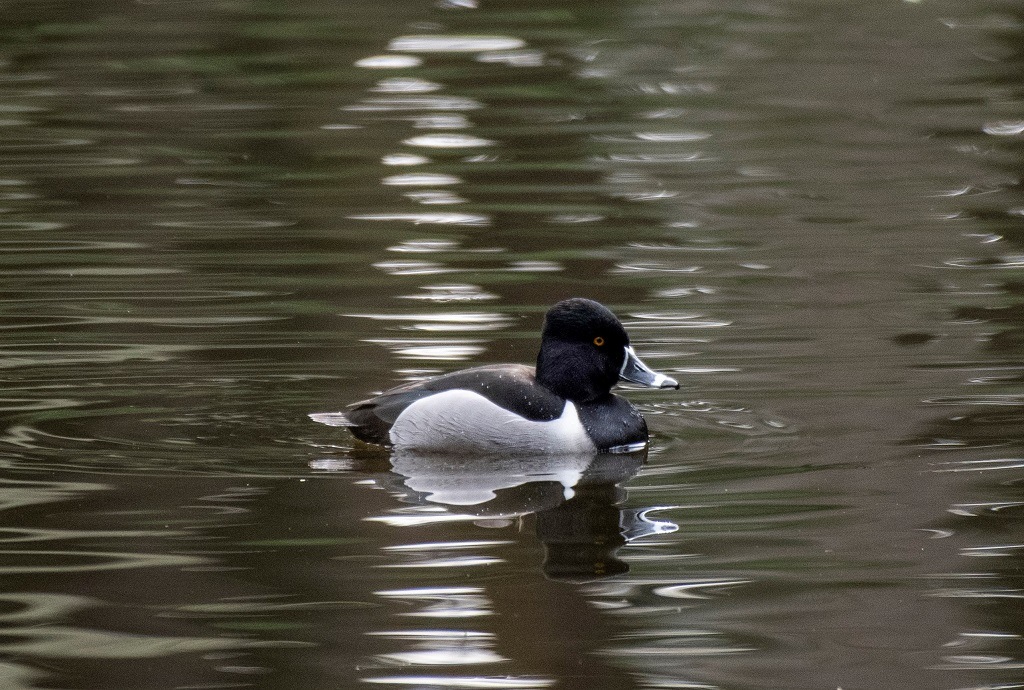Our Free-Roaming Area is a 435-acre Northwest paradise for herds of Roosevelt elk, bison, moose, caribou, bighorn sheep, mountain goats, deer and swan. In addition to the elegant trumpeter swans—the largest extant species of waterfowl, there is a varied and wide-ranging number of waterfowl species that—for at least part of the year—call the ponds and lakes at Northwest Trek their home.

The Green-winged Teal is North America’s smallest dabbling duck. What is a dabbling duck you may wonder? A dabbling duck is a type of shallow water duck that feeds primarily along the surface of the water or by tipping headfirst into the water to graze on aquatic plants, vegetation, larvae, and insects. The Green-winged Teal feeds on shallow bodies of water and in flooded fields. Our Free-Roaming Area has some ideal places for this small freshwater bird.


Next is the Hooded Merganser, a cavity nester along wooded waterways in the temperate parts of North America. Hooded mergansers breed mainly in southeastern Canada. They winter along the East Coast of the United States, the Gulf Coast and, to a lesser degree, California, Oregon and here in Washington. Unlike the dabbling ducks, Mergansers are the only North American ducks that specialize in eating fish.

Although it mixes freely with other diving ducks on large lakes in winter, the Ring-necked Duck is also found on small, tree-lined ponds, and associating with dabbling ducks on shallow waters. A strong and fast flier, it can take flight by springing up directly from the water. If you are trying to identify this species, don’t look for a ring around the neck; it’s hard to see. Look instead for the bird’s peaked head shape, white ring around the bill, and white patch just in front of the gray flanks.

And of course, no pond or lake is complete without the most familiar of all North American ducks, the Mallard.
Other waterfowl and water birds you may see—depending on the season you visit—are bufflehead, common mergansers, American Wigeon, Double-crested Cormorant (shore bird), Canadian geese, cackling geese and on occasion the Greater White-fronted geese. The Belted Kingfisher and Red-winged Blackbird are commonly seen by the wetlands as well.
Are you ready to do some waterfowl watching at Northwest Trek? Take a Wild Drive or Keeper Adventure Tour the next time you visit. And don’t forget to see our other feathered friends, from bald eagles at Eagle Passage to snowy owls, a barn owl and a golden eagle named Hayward.